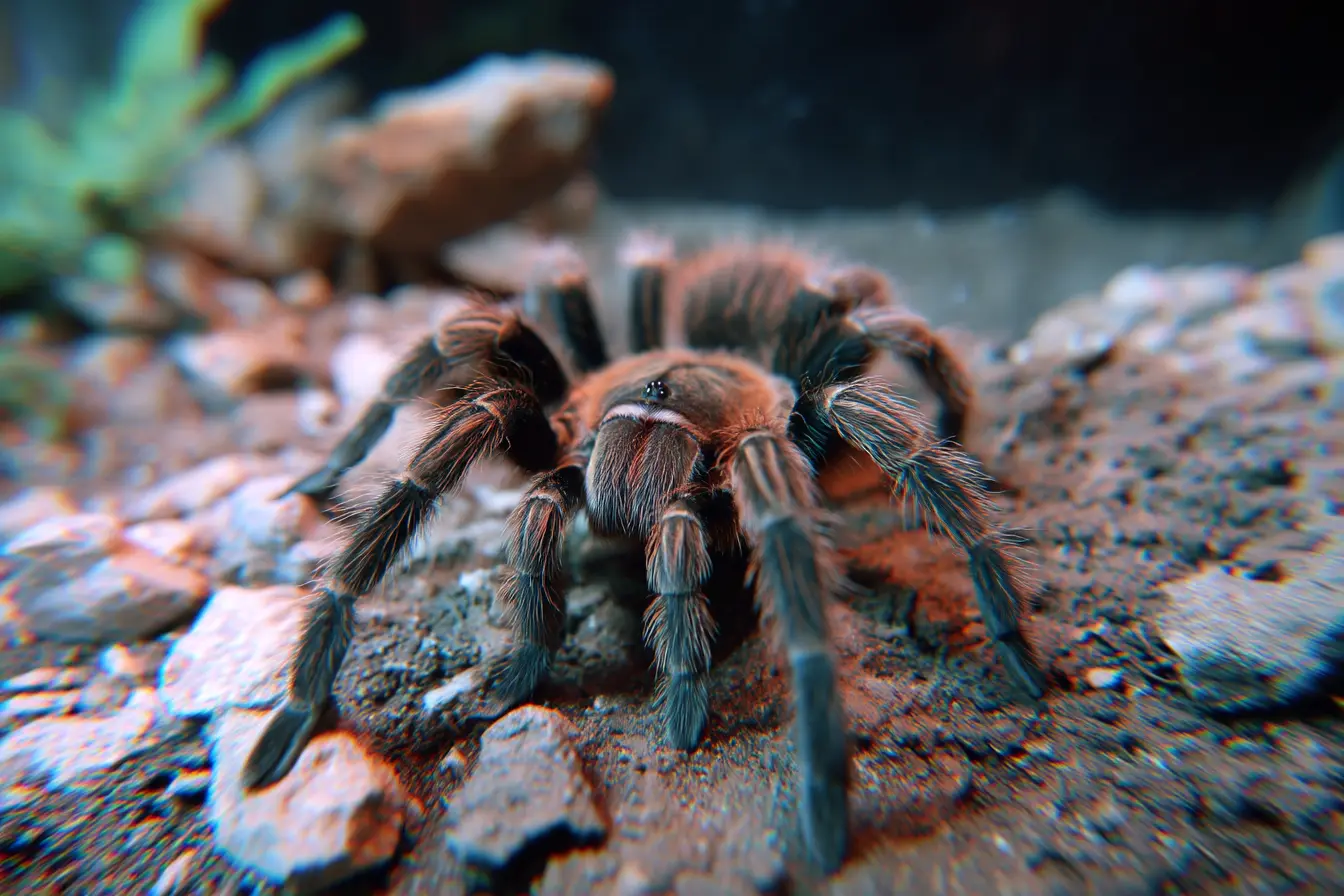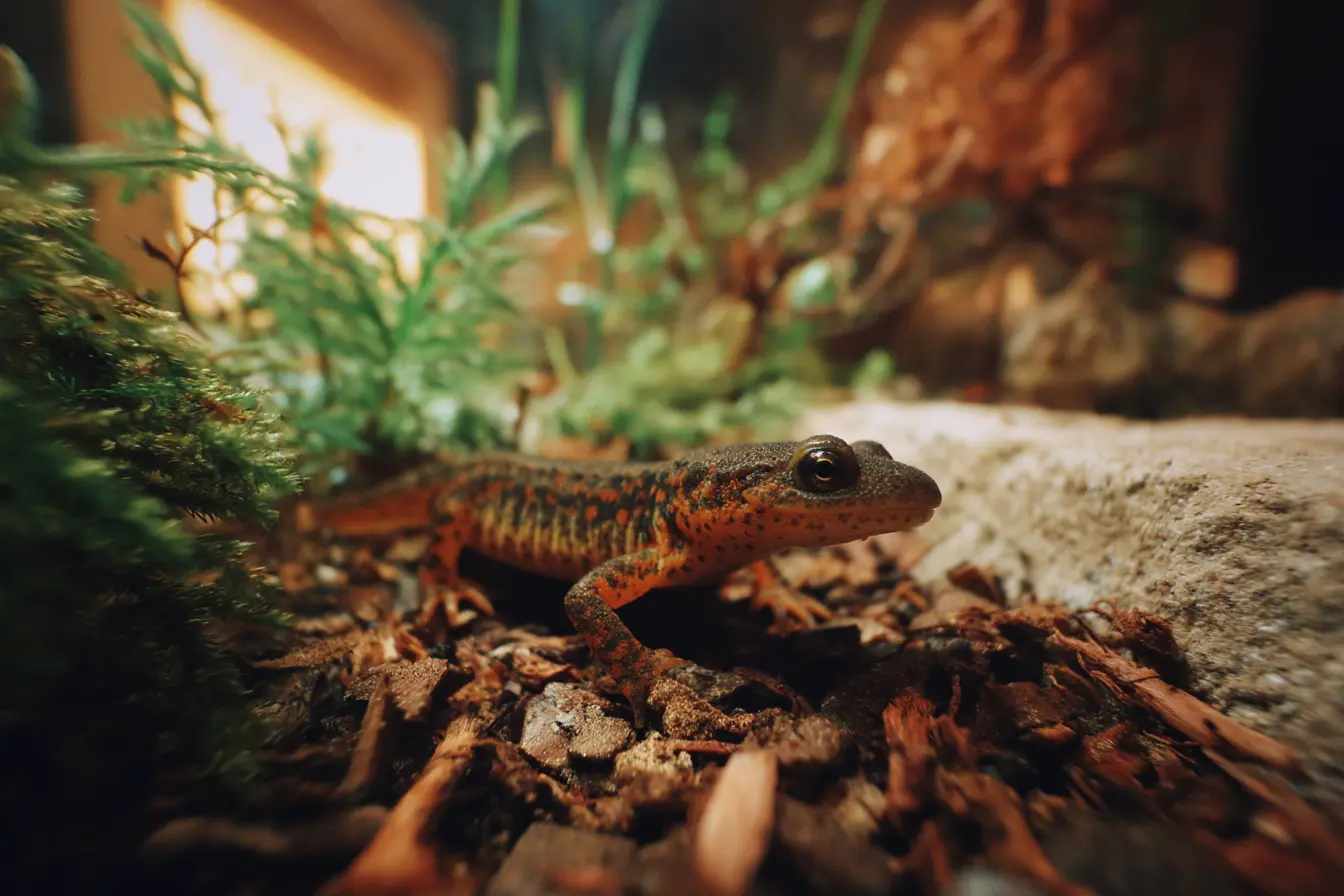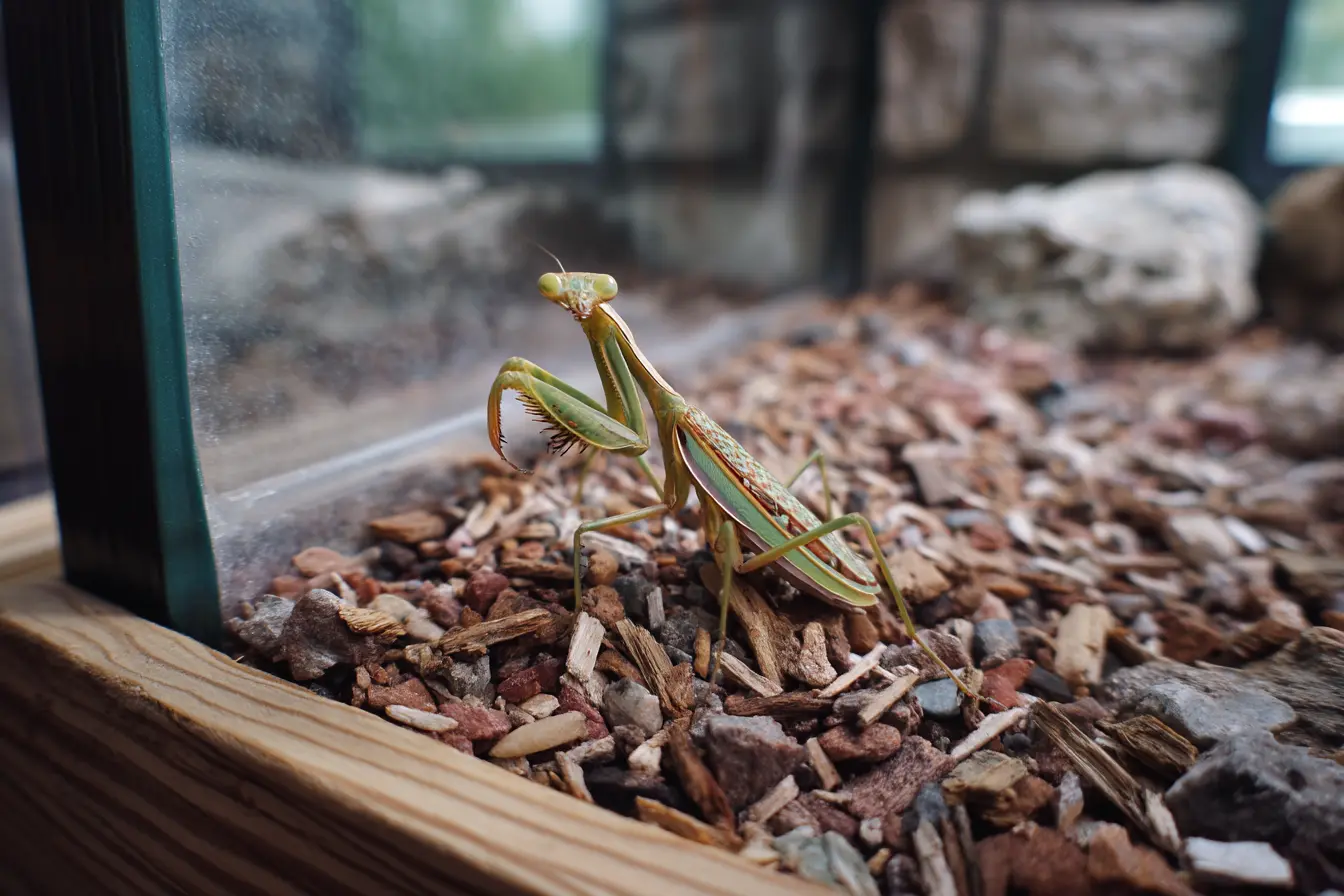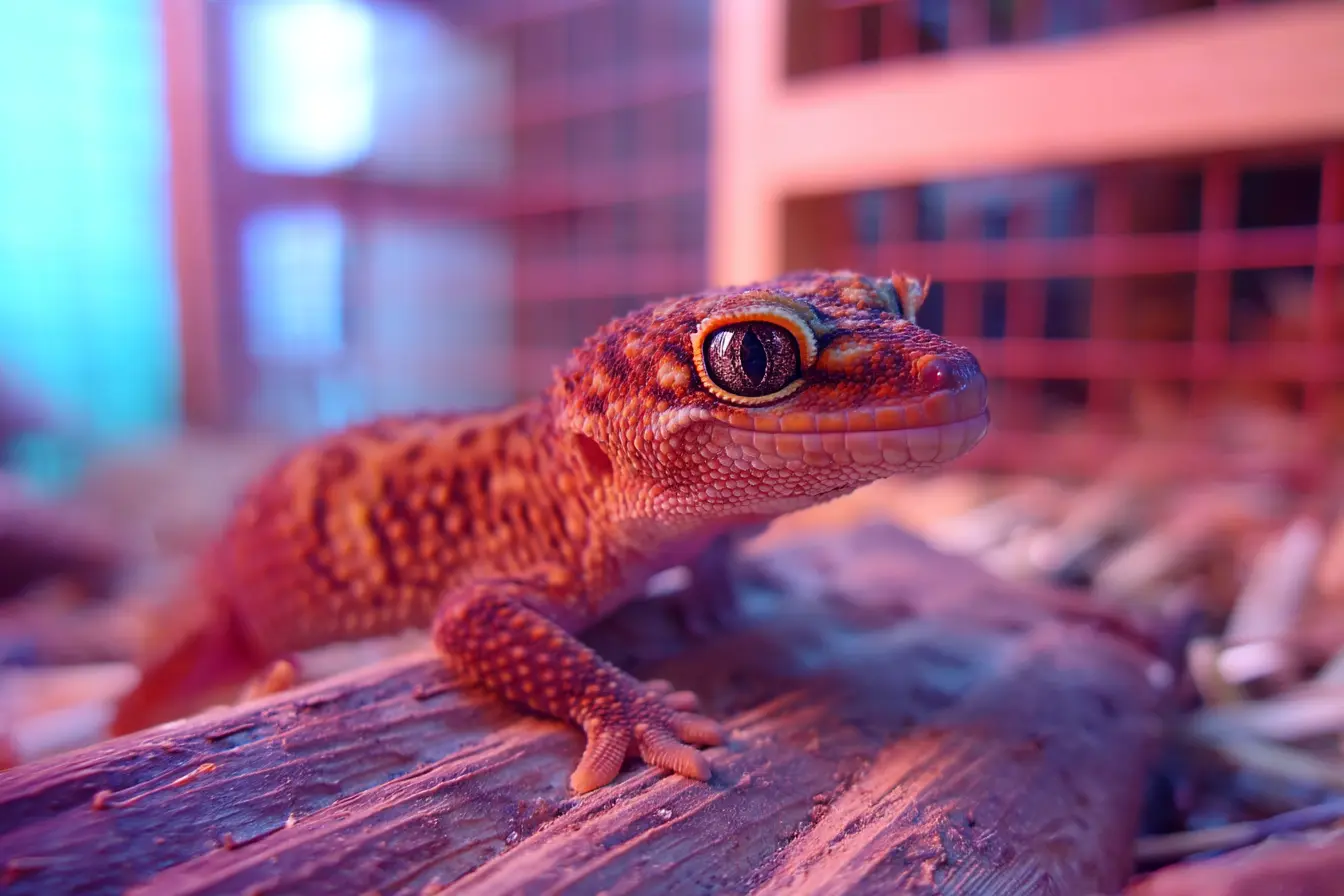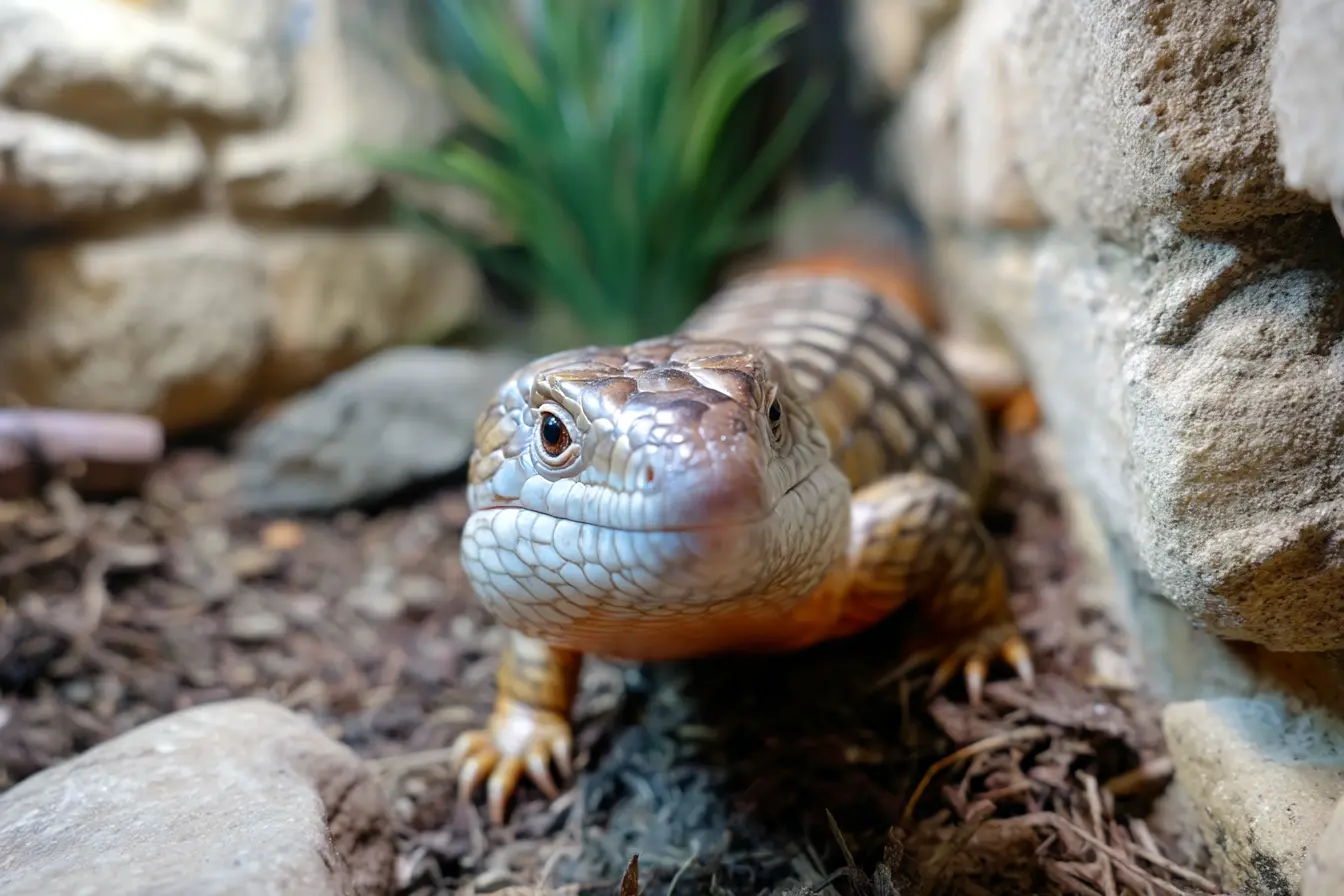
Blue-Tongued Skink Care Guide
If you’re considering getting a blue-tongued skink as a pet, you’re in for a fascinating experience. Blue-tongued skinks are intelligent, hardy reptiles known for their docile nature and, of course, their striking blue tongues. These lizards are relatively easy to care for with the right knowledge and preparation, making them a great choice for reptile enthusiasts.
In this guide, we’ll cover everything you need to know about blue-tongued skinks, including their natural behaviour, housing requirements, diet, health care, and more.
What is a Blue-Tongued Skink?
Blue-tongued skinks (genus Tiliqua) are medium-sized, ground-dwelling lizards native to Australia, New Guinea, and parts of Indonesia. They are named for their vivid blue tongues, which they display to deter predators.
The most common species kept as pets is the northern blue-tongued skink (Tiliqua scincoides intermedia), though there are several others available. These skinks grow to about 45–60 cm in length and can live for 15–20 years with proper care.
Blue-tongued skinks are known for being friendly and easy to handle, making them ideal for beginners and experienced keepers alike.
Sourcing and Selecting a Blue-Tongued Skink
It’s important to choose a healthy skink from a reputable source.
Where to Buy
- Reputable breeders: Breeders offer healthy, captive-bred animals and can provide detailed information about the skink’s background.
- Specialist reptile shops: Many specialist reptile shops in the UK sell blue-tongued skinks and offer guidance on their care.
- Rescue centres: Consider adopting a skink in need of a home from a reptile rescue organisation.
Avoid purchasing from unverified online sources or non-specialist pet shops, as these skinks may be wild-caught or poorly cared for.
What to Look For
When selecting a blue-tongued skink, check for these signs of good health:
- Clear eyes and nostrils with no discharge
- Smooth, shiny skin with no retained shed
- A full, well-rounded body and tail
- Active and curious behaviour
Setting Up the Ideal Habitat
Blue-tongued skinks are terrestrial and need a spacious, well-ventilated enclosure with plenty of floor space.
Enclosure Size
The minimum recommended size for an adult blue-tongued skink is 120 cm (L) x 60 cm (W) x 45 cm (H). Bigger is always better, especially if you want to add more enrichment items like hides and branches.
Substrate
Choose a safe, absorbent substrate that helps maintain humidity. Good options include:
- Coconut husk
- Orchid bark
- Aspen shavings
Avoid sand or other loose substrates that can cause impaction if ingested.
Heating and Lighting
Blue-tongued skinks are cold-blooded and require external heat sources to regulate their body temperature.
- Basking spot: 35–40°C
- Cool side: 22–26°C
Use a combination of basking bulbs and ceramic heat emitters to maintain these temperatures. Blue-tongued skinks also benefit from UVB lighting, which helps them synthesise vitamin D3 and absorb calcium. A 10–12% UVB bulb is recommended.
Humidity
Maintain humidity levels between 40–60%, depending on the species. Regular misting and a water dish can help maintain proper humidity. Use a hygrometer to monitor levels.
Hides and Enrichment
Provide multiple hides on both the warm and cool sides of the enclosure. Include flat rocks for basking and branches for climbing. Blue-tongued skinks are curious animals that benefit from an enriched environment.
Diet and Nutrition
Blue-tongued skinks are omnivores and require a varied diet of animal protein, vegetables, and fruit.
Staple Foods
- Protein: Cooked chicken, lean beef, insects (dubia roaches, crickets, mealworms), and high-quality dog or cat food (grain-free, meat-based)
- Vegetables: Collard greens, dandelion greens, squash, carrots, and sweet potatoes
- Fruits: Blueberries, mango, papaya, and strawberries (in moderation)
Supplements
To ensure your skink stays healthy, dust their food with:
- Calcium powder with vitamin D3 twice a week
- Multivitamin supplement once a week
Always provide fresh water in a shallow dish and change it daily.
Handling and Behaviour
Blue-tongued skinks are generally docile and tolerate handling well. Start handling your skink gently from a young age to build trust.
Tips for Handling
- Support their entire body, especially their tail and legs.
- Avoid sudden movements or grabbing them from above, which can startle them.
- Wash your hands before and after handling to prevent the spread of bacteria.
Blue-tongued skinks are curious and will often explore their surroundings when out of their enclosure.
Common Health Issues
Blue-tongued skinks are hardy reptiles, but they can still suffer from health problems if not properly cared for.
Metabolic Bone Disease (MBD)
Caused by a lack of calcium or inadequate UVB exposure. Symptoms include lethargy, soft bones, and deformities.
Respiratory Infections
Often caused by incorrect temperatures or high humidity. Symptoms include wheezing, open-mouth breathing, and nasal discharge.
Shedding Problems
Retained shed, particularly around the toes, can cause circulation issues. Ensure proper humidity and provide rough surfaces to help with shedding.
Parasites
Internal and external parasites can affect skinks. Regular faecal tests can help detect internal parasites early.
If you notice any signs of illness, consult an experienced reptile vet immediately.
Specialist Vet Care
Blue-tongued skinks don’t need vaccinations, but routine health checks with a reptile specialist vet are essential.
Routine Health Checks
An annual visit to a reptile vet is recommended. This includes a physical exam and a faecal test to check for parasites.
Emergency Situations
Seek immediate veterinary attention if your skink shows signs of:
- Significant weight loss
- Lethargy or refusal to eat for more than a few days
- Difficulty breathing or persistent wheezing
- Wounds or visible injuries
Care and Maintenance
Proper maintenance is essential for keeping your blue-tongued skink healthy and its environment clean.
Daily Tasks
- Check temperatures and humidity levels
- Spot-clean waste and remove uneaten food
- Ensure fresh water is available
Weekly Tasks
- Spot-clean substrate and wipe down surfaces with a reptile-safe disinfectant
Monthly Tasks
- Deep-clean the enclosure and replace substrate
- Check and replace UVB bulbs every six months if needed
Final Thoughts
Blue-tongued skinks make wonderful pets with the right care. They’re interactive, intelligent, and relatively low-maintenance compared to other reptiles. However, they require a long-term commitment and a suitable environment to thrive.
By following this guide, you’ll be well-prepared to provide your blue-tongued skink with a happy and healthy life.
Vets near you
Speciality vets
- Aquatics vet specialists
- Birds vet specialists
- Camelids vet specialists
- Cats vet specialists
- Cattle vet specialists
- Deer vet specialists
- Dogs vet specialists
- Equines vet specialists
- Exotic vet specialists
- Goats vet specialists
- Pigs vet specialists
- Poultry vet specialists
- Sheep vet specialists
- Small Mammals vet specialists
- Wild vet specialists
